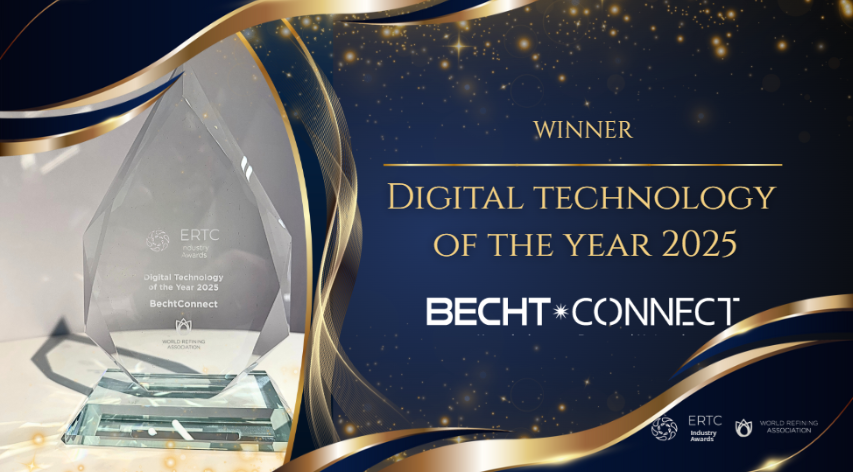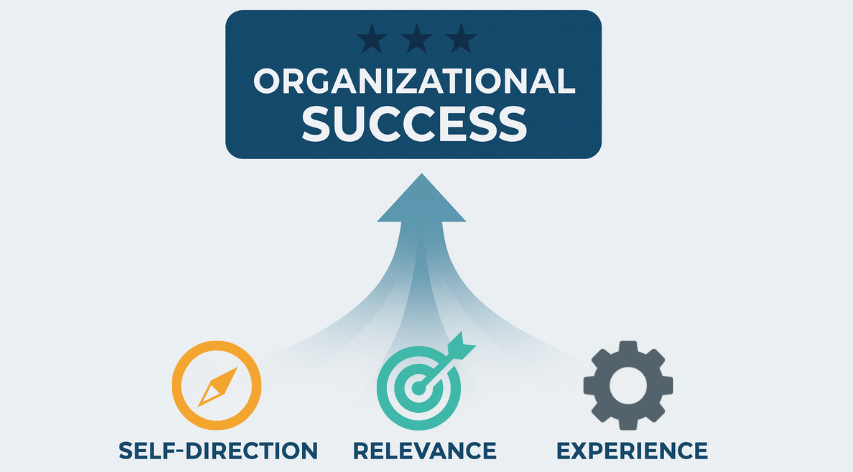A New Framework for Successful Hybrid Training
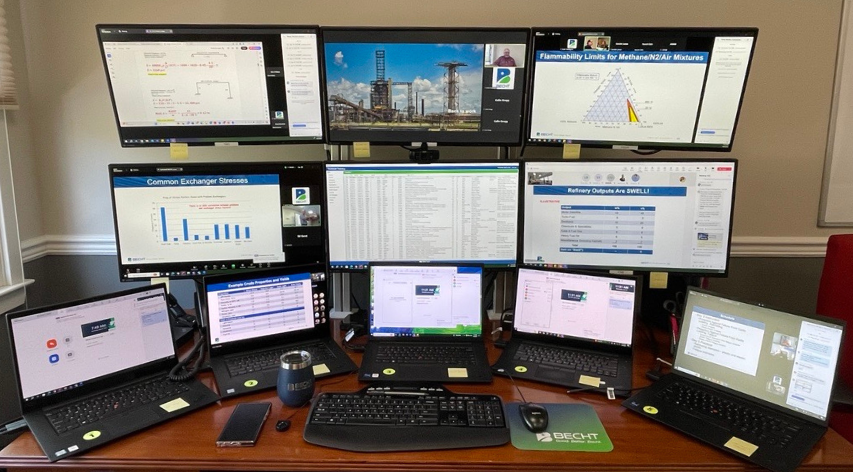
If you were to observe a Becht training session as a “fly on the wall,” you would witness more than basic lessons. Participants’ eyes spark with curiosity, discussions are driven by problem-solving, and energy flows from the interactions between skilled instructors and engaged learners, whether across the table or across continents.
Since 1992, Becht has delivered world-class technical training, providing high-impact, application-focused courses for professionals working in the energy, chemical, and manufacturing sectors. In 2016, Becht embraced a hybrid learning model, allowing for simultaneous in-person and virtual participation. These hybrid trainings preserved the meaningful connections of live interaction while also enabling the flexibility of joining from anywhere in the world. What once was confined to the walls of a classroom was transformed into a connected, global learning experience.
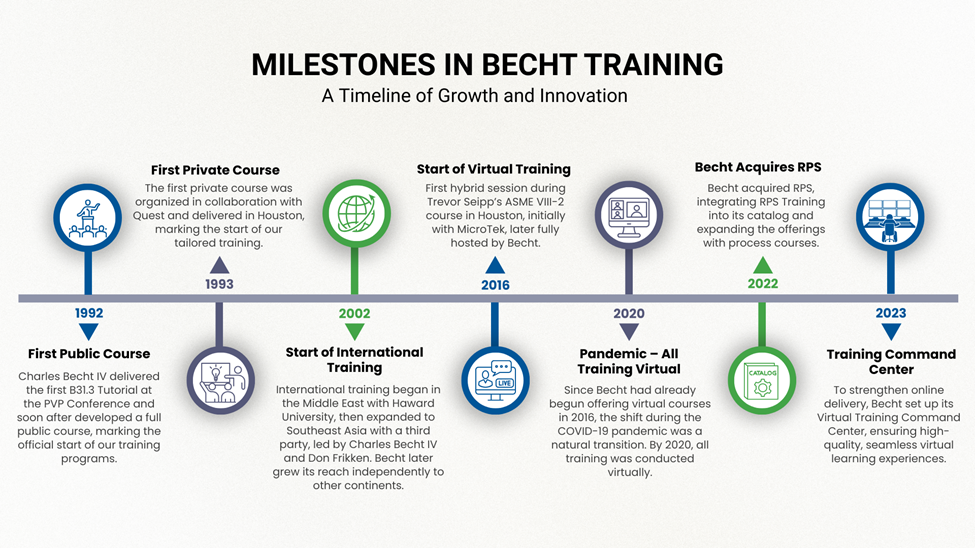
From the inception of this hybrid technical training model, the Becht team has served as “flies on the wall” for more than a hundred virtual sessions. From their observations, they have identified patterns and pitfalls to hybrid instruction:
- A skilled instructor captures everyone’s attention, whether they’re in the room or on the screen.
- Participants lean forward, nodding along, taking notes, and asking thoughtful questions.
- Occasionally, there’s the opposite: great content but distracted learners, or eager learners paired with a presenter struggling to connect.
Becht’s Virtual Learning Effectiveness Window can be applied to help navigate these challenges. The Virtual Learning Effectiveness Window provides a way of mapping the dynamics that drive or diminish learning success in the digital classroom. Inspired by the Johari Window’s ability to improve awareness and communication, the Becht model applies a similar four-quadrant approach to virtual and hybrid training – but instead of mapping self-knowledge, this framework maps the relationship between instructor effectiveness and participant engagement, two factors that must align to achieve optimal learning outcomes.
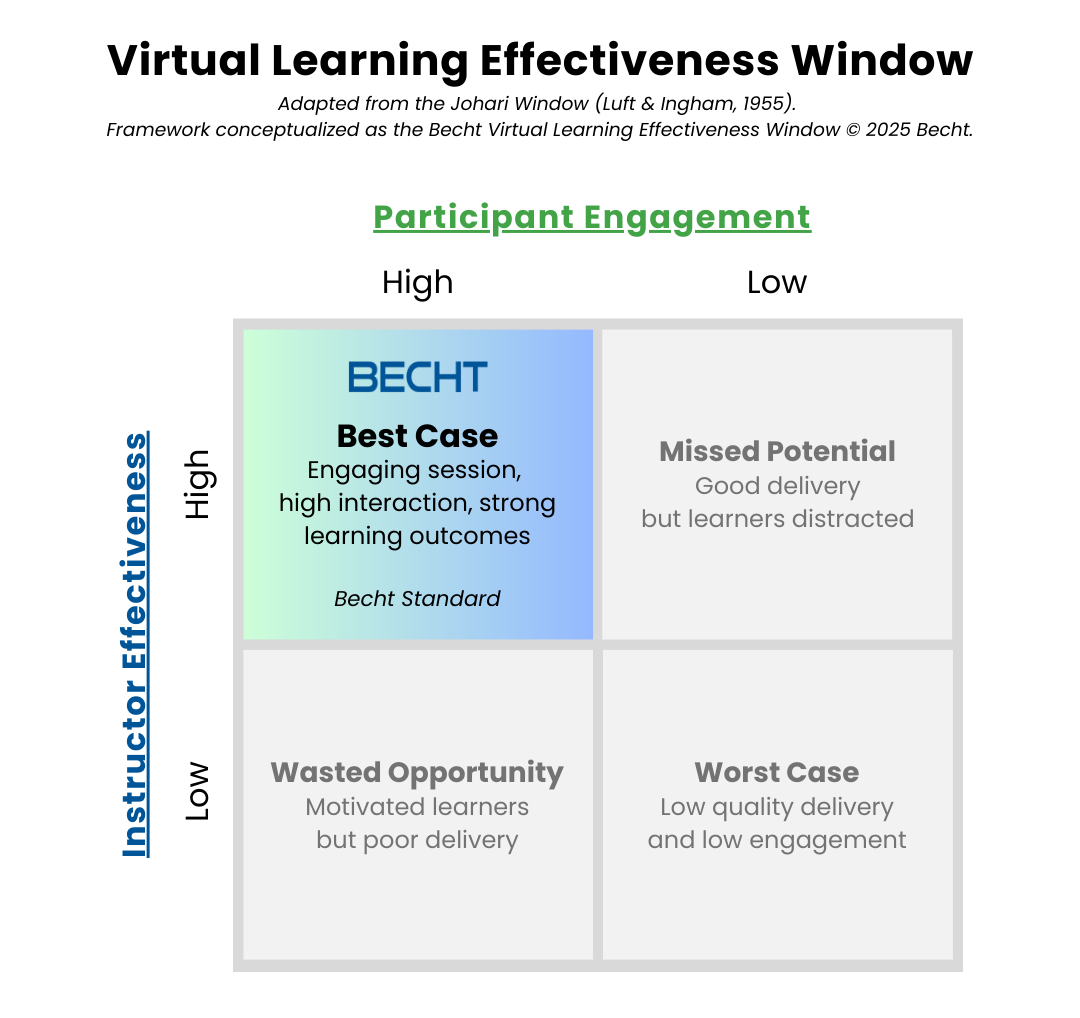
The optimal quadrant, the Becht Standard, represents the best-case scenario: where a highly skilled instructor meets an actively engaged audience. It is the benchmark, the aspiration, and the commitment of Becht to provide exceptional content, deliver it with excellence, and create an environment where every participant succeeds and feels empowered to apply what they have learned.
How to Get the Most Out of a Virtual Session
The Virtual Learning Effectiveness Window shows that optimal learning is experienced when instructor quality and participant engagement are aligned. To move closer to the Becht Standard quadrant, the following practices are encouraged.
For participants:
- Minimize distractions, close unrelated tabs, and silence notifications.
- Keep cameras on whenever possible to increase focus and connection.
- Demonstrate active engagement by asking questions, joining discussions, and sharing insights.
For instructors:
- Use participants’ names and encourage direct engagement to draw learners into the conversation.
- Mix presentations with polls, breakout rooms, exercises, and Q&A to sustain energy and encourage engagement.
- Prepare materials to be clear, concise, suited to the audience, and interactive.
- Utilize available online tools to enhance collaboration.
Final Thoughts
Effective learning is best achieved as a partnership. Inspiration may be provided by a skilled instructor, but true magic is created when participants meet that energy with full attention and curiosity.
In the hybrid environment, success is shaped not only by instructors and participants, but also by the technology and infrastructure that connect them. For this reason, Becht has continually invested in the Virtual Training Command Center. This initiative further enhances quality, reliability, and interactivity, ensuring that every learner, regardless of location, will experience the same high-impact engagement and results. Importantly, the Command Center also allows a dedicated team (separate from the instructor) to monitor and support delivery in real time, ensuring smooth execution across multiple hybrid courses running simultaneously.
For our clients, the Becht Standard means confidence that every training – whether virtual, hybrid, or in person – delivers consistent quality and practical results that can be applied immediately on the job. It ensures flexibility without compromising impact, making every investment in learning translate into safer operations, stronger performance, and lasting value.
Want to experience Becht’s Standard of Interactive Learning for yourself? Let’s chat about how we can bring hybrid learning to your team. Visit our Learning & Development Page to view upcoming sessions and experience hybrid training the Becht way.
Like what you just read? Join our email list for more expert insights and industry updates.



